Last updated on November 3rd, 2022
A safari is more than wildlife, it’s about the people
By Carol Moore-Ede, Guest Contributor
It is not surprising that many who first set foot on the Great Plains of Africa feel a deep sense of returning home. Perhaps it is something imprinted deep within our genes, a connection to our hominid ancestors, the remains of whom lie amidst the soils of Tanzania. It was near Lake Olduvai and Laetoli that the oldest vestiges of the genus Homo were found, the latter some 3.6 million years old.
It had been my lifelong dream to visit Africa. In my youth I had watched and read about role models such as Jane Goodall and Dian Fossey. I admired their dedication to studying animals as visitors to the animals’ natural habitats, rather than importing the creatures to ours. And of course, a steady diet of David Attenborough’s documentaries whetted my appetite for observing animals in the wild for myself. And so finally in April of 2022, I got my chance to go to Tanzania on safari and observe a cornucopia of wildlife in their natural state.

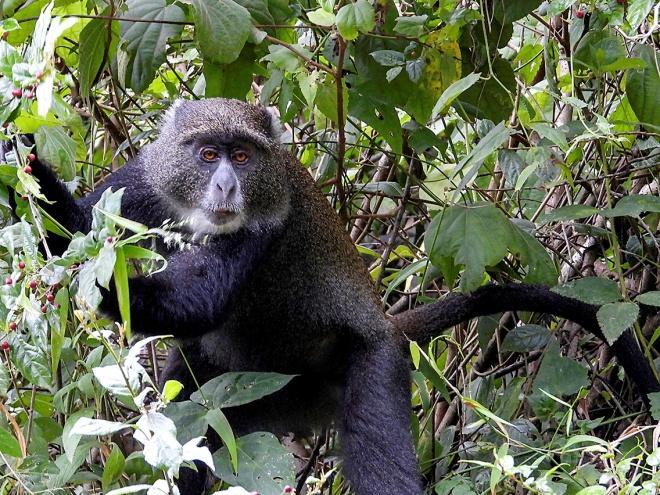
“Wilderness gave us knowledge. Wilderness made us human. We came from here. Perhaps that is why so many of us feel a strong bond to this land called Serengeti; it is the land of our youth.”
-Boyd Norton

Tanzania is a prime safari destination
Tanzania is the second largest country in East Africa and one of the continent’s prime safari destinations. It stretches along the idyllic Indian Ocean coast and shares borders with other safari destinations such as Kenya, Uganda, Rwanda, Zambia, Malawi and Mozambique. It is home to a great diversity of wildlife, captivating cultures, and a wealth of beautiful and varied topography.
There is something about safari life that makes you forget all your sorrows and feel as if you had drunk half a bottle of champagne — bubbling over with heartfelt gratitude for being alive.”
-Karen Blixen, “Out of Africa” author
It includes the far-reaching savannah of the Serengeti; Africa’s highest mountain, Mount Kilimanjaro; the Ngorongoro Crater, an immense 8,000 feet high caldera, with an unbroken diameter of 25 km. – the largest in the world; and the shockingly pink flamingo-lined shores of Lake Manyara, to name a few of the numerous parks and conservation areas.
Impressively, about a third of the country is protected by national parks, game reserves, marine parks, and forest reserves. It is here that you can see firsthand the Big 5 – the lion, leopard, black rhinoceros, African bush elephant, and Cape buffalo, this latter describe by Ernest Hemingway as “the most dangerous game“. It is also home to the Small 5 – the elephant shrew, leopard tortoise, ant lion, rhino beetle and buffalo weaver.
When to go to Tanzania
Once the trip was booked, the first question I was asked was, “why go in the rainy season?” The answer was simple. It is the time of the Great Migration, that awesome and magnificent annual display of over a million wildebeests, hundreds of thousands of zebras, and gazelles co-mingling on their great trek through the Serengeti-Mara (Kenya) ecosystem. It is a 1900-mile journey full of challenges and hardships with predators such as lions, leopards, cheetahs and crocodiles on the lookout for opportunities among the almost a quarter of a million babies born during this mass calving season, or for the weak and lost.




We stayed in six camps, in six different parks, each unique and offering a different experience. The safari owner, Leslie Udwin, accompanied us the entire time, meeting us at the airport, looking out for those with special needs, arranging flights, and seeing us off at the airport. You could not be in safer hands. He also has a wealth of knowledge, which he is eager to share.
Our two excellent driver-guides, Bahati and Raymond, are committed to conservation. My guide, Bahati, a “modern” Maasai, studied at the University of Arusha where he specialized in geology and ornithology. His knowledge was astounding, and he could not only recognize a species by sight, but could also mimic its call. We were up at 6:30 am and on the “road” by 8 am, returning as the sun was turning the sky orange-scarlet. This was a “serious” safari experience.
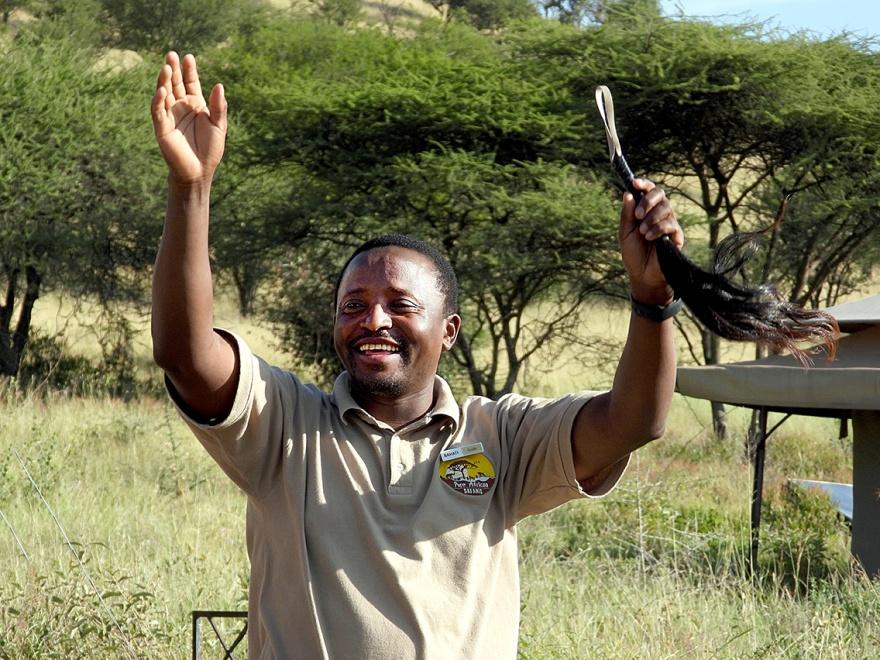
“To witness that calm rhythm of life revives our worn souls and recaptures a feeling of belonging to the natural world. No one can return from the Serengeti unchanged, tawny lions will forever prowl our memory and great herds throng our imagination.”
-George Schaller
The order of life in Tanzania
Everything you observe exists together in a delicate balance. The wildebeest and zebra make ideal partners. The wildebeest have a great sense of hearing and smell, whereas the zebra have excellent eyesight. This helps in the search for food and in signaling danger. When feeling threatened, zebras will rest their heads on each other’s backs while facing in different directions in order to observe their surroundings in every direction.
In this environment, nothing is wasted. The great African cats make a kill, and when they have finished their feast, various species of vultures arrive – each with a specific purpose in disposing of the carcass. They are followed by the hyenas. There is a natural order and each awaits its turn.


I was struck deeply by the nurturing that existed among the various species. Elephants greeted each other by touching or intertwining their trunks, and the herd fiercely protected the young calves by shielding them from any potential danger. And there was playfulness between these gentle giants as they cavorted in the mud, sprayed each other with water, or mischievously knocked one another over like children play-wrestling.
The monkey species despite their antics displayed exceptional tenderness towards their young. I observed a Vervet monkey female, offspring across her lap, carefully grooming it and removing any bugs; and a young baboon leaning forward to touch its mother’s nose in some kind of a monkey embrace.
The lion prides, the great sisterhood of the plains, is a social organization that lives and hunts together – on average 10 of them, but on occasion up to 40. At the end of the day, when they re-gather after a hunt, they greet each other one by one with gentle caresses. These are scenes you will witness in the wild that will be forever imprinted on your heart and mind.


How to Pack and Prepare for an African Safari
Diana Eden, our stylish and adventurous women over 80 columnist, shares seven practical tips to prepare for her first African safari.
Tanzania is a treat for all the senses
In Tanzania, the colours are magnificent and more saturated than I have ever before witnessed.
There are birds of iridescent blues and greens, bright yellows, flaming reds, and every colour in-between. Some are tiny, the smallest being the three-inch African penduline-tit, and the largest is the kori bustard with a swing span of 50 inches, the heaviest and largest flying bird in Africa.
In April, you will see every shade of green in the verdant landscape and a vivid assortment of flowers. Natural sounds abound and fill the air with bird songs, the wind in the grass, chattering monkeys, braying zebras and belching of hippopotami. The fragrance of the sweet grass and wildflowers is a tonic.
However, be prepared for the foul smell from the hippopotami pools! The male hippo marks its territory by spinning its tail around, flinging its excrement everywhere. Nevertheless, there is an upside to this. It has been discovered that when they defecate into their large pools, they create a “microbiome,” by sharing gut bacteria with their companions. The community microbes can change the chemistry of the water and if swallowed by other hippos, the bacteria may possibly aid digestion and resistance to disease.


Is a safari in Tanzania safe?
For those worried about danger, the safari is a safe experience.
The animals in Tanzania are not stressed as in some countries. They go about their day-to-day lives ignoring the onlooker. However, you must never leave a vehicle unless the area has been examined thoroughly. The guides are fastidious in checking potential danger before letting people go “bushy-bushy” (relieve themselves), or stopping for a picnic lunch. We met a delightful young woman doing the safari solo with her guide and she never felt unsafe.
For those with expensive camera equipment, there is no threat of theft. It is only in a crowded city, such as Arusha, that precaution should be taken to keep vehicle windows up, as young men on motorcycles can quickly lean in and grab your camera from around your neck. Walking around the city poses no problem with the equipment.
Where to stay in Tanzania
When I learned that we would be sleeping in tents, I imagined a small pup tent that I would have to raise each evening. At my age, I was not sure how I would manage crawling in on my hands and knees, and I fervently hoped at least for an air mattress.

One of our stays was in a large hotel, the Ngorongoro Serena, with a stunning view of the Ngorongoro Crater. However, I preferred the tents where the animals roamed freely around us.
At night I could hear the bark, bray, snort, and nicker of the zebra; the sounds of the male lions – purrs, grunts, growls, hums, meows, roars and moans (the roar being an incredibly low-pitched call that sometimes impressively reverberates for eight kilometres across the savannah); the short grunts of the Cape buffalo; and the rare snort or grunt of a giraffe when they sense danger. In the morning, there was a harmony of bird songs to greet the pink sky of dawn. Most of these experiences are missed in a hotel.
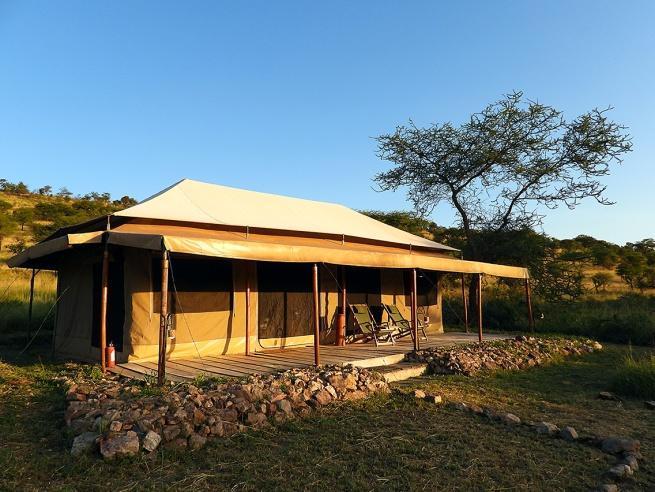

Proud and welcoming people
The Tanzanians are a very hospitable people. They love to share their country and its attributes. Smiles abound and there is an openness about them that is very endearing.
In the tent camps, we were welcomed upon arrival and again on each return from a game drive. At the end of a stay, the entire staff would sing and sometimes dance for us and send us on our way with good wishes and friendly waves. They are proud of their country and of its achievements.
Tanzania is one of the most homogenous countries in Africa, with different tribes living peacefully side by side and intermarrying. The traditional Maasai are the exception and continue to live together practicing their own ways of life and living in their traditional bomas (huts). There has been some clash between the government and these very proud people. The authorities have removed some of the people from various conservation areas in an attempt to protect the wildlife and habitat.
The Maasai are pastoral people with their lifestyle centering on their cattle, which is their primary source of food. The wealth of a man is measured by the number of cattle and children he has. He would as well be expected to have many wives. Their cattle, goats and sheep today must now graze outside certain perimeters, such as the Ngorongoro Crater which had formally been part of their ancestral lands.
Their clothing is colourful with red being a favourite colour. However, blue, black, striped and checkered cloth is also worn, as well as the brightly multi-coloured cloths of African design. If you want to take a photograph of a traditional Maasai, be prepared to negotiate a price in advance. Some can be quite aggressive and expensive in their demands if you fail to ask permission.
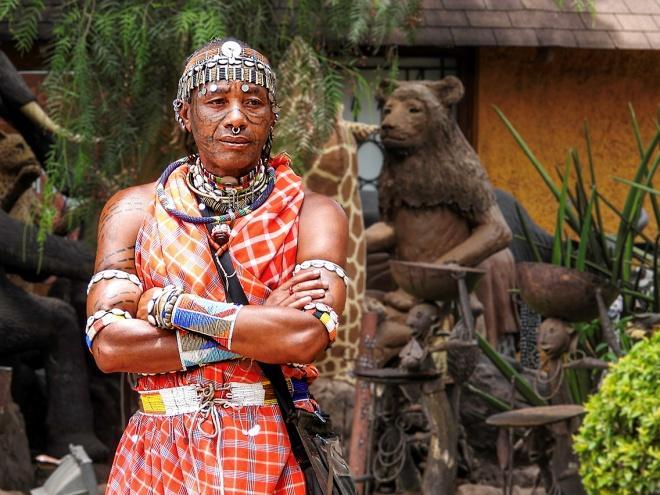

Arusha is the safari capital of Tanzania
The city of Arusha, is close to the Serengeti National Park, the Ngorongoro Conservation Area, Lake Manyara National Park, Olduvai Gorge, Tarangire National Park, Mount Kilimanjaro, and Mount Meru in the Arusha National Park and therefore is deemed to be the safari capital of the world. It is full of hustle and bustle, and individual merchants descending on tourists to sell “African” products.
But the real story is that these items cost pennies to produce – in China! Many of the fabrics are also made elsewhere and can be found throughout Southeast Asia and Europe. When shopping, it is best to go to a reputable location where the items are made on-site and guaranteed, or to the Cultural Centre and wonderful African Art Gallery, which resembles the Guggenheim – African style.

Painting of African Women by Magezi on display at the Arusha Art Gallery / Photo by Carol Moore-Ede
“We need women at all levels, including the top, to change the dynamic, reshape the conversation, to make sure women’s voices are heard and heeded, not overlooked and ignored.”
–Sheryl Sandberg
Tanzania has its first female President
I was intrigued by large posters of a woman spread throughout the city. I discovered it was Samia Suluhu Hassan, sworn in as the first female President of Tanzania on March 17, 2021.
Hassan is one of only two serving female heads of state in Africa, Ethiopia’s Sahle-Work Zewde being the other. She has a postgraduate diploma in economics from the University of Manchester and a MSc in Community Economic Development. Hassan has been making great strides in reforms in medicine, education, women’s rights, gender equality, mending political divides, and lifting repression of the media and reissuing licenses to opposition publications.
She has been a strong advocate for inoculations against Covid and has put strict rules in place for tourists entering Tanzania, such as proof of vaccine, mask-wearing, and other safety measures.
She was named this year by American magazine, as one of the 100 most influential people in the world. Her example is empowering and inspiring to the women and children of the country.
As the brave Malala Yousafzai said, “I raise up my voice—not so that I can shout, but so that those without a voice can be heard. … We cannot all succeed when half of us are held back”.


“Education is the most powerful weapon which you can use to change the world.”
—Nelson Mandela
The children of Tanzania
You will be enchanted by the children of Tanzania. I know I was. Once one of the most uneducated populations in Africa (85% illiterate), today all lower-secondary school children have the right to free, but compulsory, basic education. They are given school uniforms which they proudly wear. Education also includes teaching skills in literacy and numeracy. Enrolment has increased substantially, and the goal of the government initiative is to become a middle-income country by 2025. The project has already shown a significant improvement.
The best way to help these children is not to give them money. If you want to photograph them, give them pencils. They are easy to pack and carry in your suitcase, and the thrill on the youngster’s faces will be imprinted on your memory forever.


Discover More From Africa
Is 85 Too Old to Travel Internationally? A Trip to Essaouira, Morocco Shows It’s Not
An injury at age 85 made me rethink travelling, but a trip to Essaouira, Morocco showed me I could return to travel with confidence.
Blue Sky Society Trust Announces Women-Only Conservation Trip to South Africa
Blue Sky Society Trust is inviting women on a conservation trip to South Africa in September 2025, in partnership with JourneyWoman.
15 Stunning Train Trips to Inspire Your Travels in 2025
These train trips across Europe, Asia, Africa and Canada remind us that the journey can be more memorable than the destination.





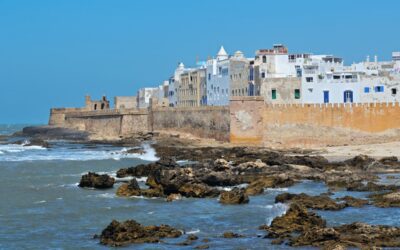
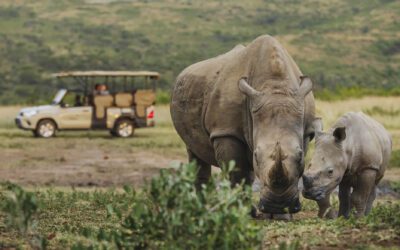

0 Comments
We always strive to use real photos from our own adventures, provided by the guest writer or from our personal travels. However, in some cases, due to photo quality, we must use stock photography. If you have any questions about the photography please let us know.
Disclaimer: We are so happy that you are checking out this page right now! We only recommend things that are suggested by our community, or through our own experience, that we believe will be helpful and practical for you. Some of our pages contain links, which means we’re part of an affiliate program for the product being mentioned. Should you decide to purchase a product using a link from on our site, JourneyWoman may earn a small commission from the retailer, which helps us maintain our beautiful website. JourneyWoman is an Amazon Associate and earns from qualifying purchases. Thank you!
We want to hear what you think about this article, and we welcome any updates or changes to improve it. You can comment below, or send an email to us at [email protected].